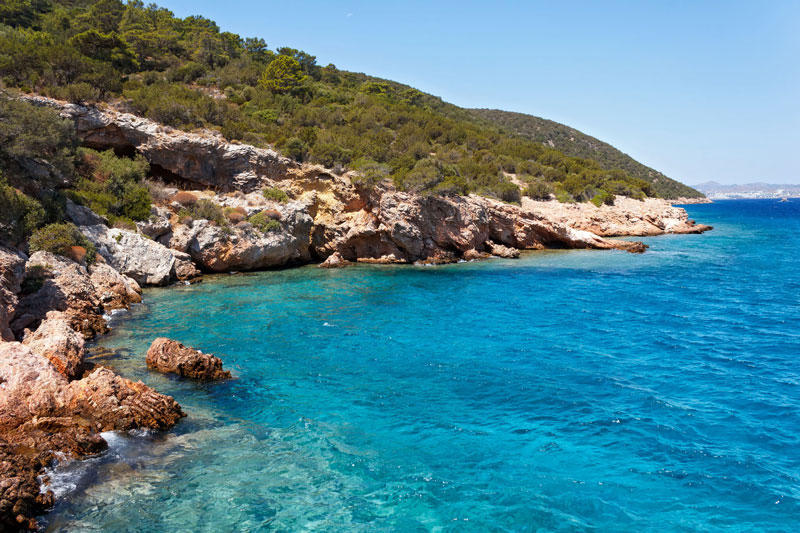Turkey’s Regional Climates
Turkey’s four western and central regions all have different climates. The Marmara Region to the northwest, with its former Ottoman capitals of Edirne, Bursa, and Istanbul, enjoys a moderate climate. Average temperatures in winter and summer are 4°C and 27°C, respectively. But expect frost and even snow December to March. Summer’s humid heat waves last for days, with temperatures of 35°C and higher, particularly in the crowded cities. Spring and autumn are typically mild but can change quickly. Lodos, a southwesterly wind, wreaks havoc on marine transportation year-round, and the northeasterly wind known as Poyraz brings the Black Sea’s freezing temperatures to the Marmara Region in winter.
The climate of the Aegean is superbly mild. Summers are hot but rarely exceed 40°C, even during July and August. Spring and autumn are sunny, with blue skies and daily temperatures averaging in the high teens. Winters are mild with occasional precipitation. The many mountains that stretch both perpendicular and parallel to the coast contain the sea breeze, making this region ideal for agriculture. The Aegean cities beyond these hills enjoy a more continental climate. For sunbathing and water sports as well as mountain sports, the region’s summer months can’t be beat. Temperate spring and fall are ideal for traipsing through ancient ruins.

Turkey’s western Mediterranean region enjoys a characteristically Mediterranean climate, with hot dry summers and moderately warm and rainy winters. Summer lasts nine months, but apart from midsummer, the coast is quite bearable. Sunny weather prevails 300 days of the year, and sea temperatures never dip below 15°C nor exceed 28°C. July and August temperatures can hover above the 40°C mark, making those heavily traveled months horrendous on unsuspecting visitors. In Antalya, the region’s largest city, winter temperatures rarely dip below 15°C. On the other hand, temperatures have been known to rise above 40°C with humidity at 85 percent, demonstrating the climate’s potential impact on the best-laid travel plans. The entire Mediterranean coast is protected from cold northerly winds by the Taurus Mountains.
Central Anatolia shows characteristics of a continental climate due to its elevation, but as you move south and east, it becomes a cold, semiarid climate. Averaging less than 25 centimeters per year, rainfall is sparse and typically occurs during fall and spring. Water conservation in cities like Konya and Ankara is often an issue, particularly during summer, and crops can fail during years of drought. Summers are bone dry and hot, with day temperatures averaging 29°C, falling to the mid-teens at night. Winters are cold and snowy, with daytime temperatures generally around 5°C and evenings at -2°C. The amount of winter snowfall is directly proportional to elevation.
Excerpted from the Second Edition of Moon Istanbul & the Turkish Coast.
Newsletter Signup
By clicking ‘Sign Up,’ I acknowledge that I have read and agree to Hachette Book Group’s Privacy Policy and Terms of Use
Pin it for Later


